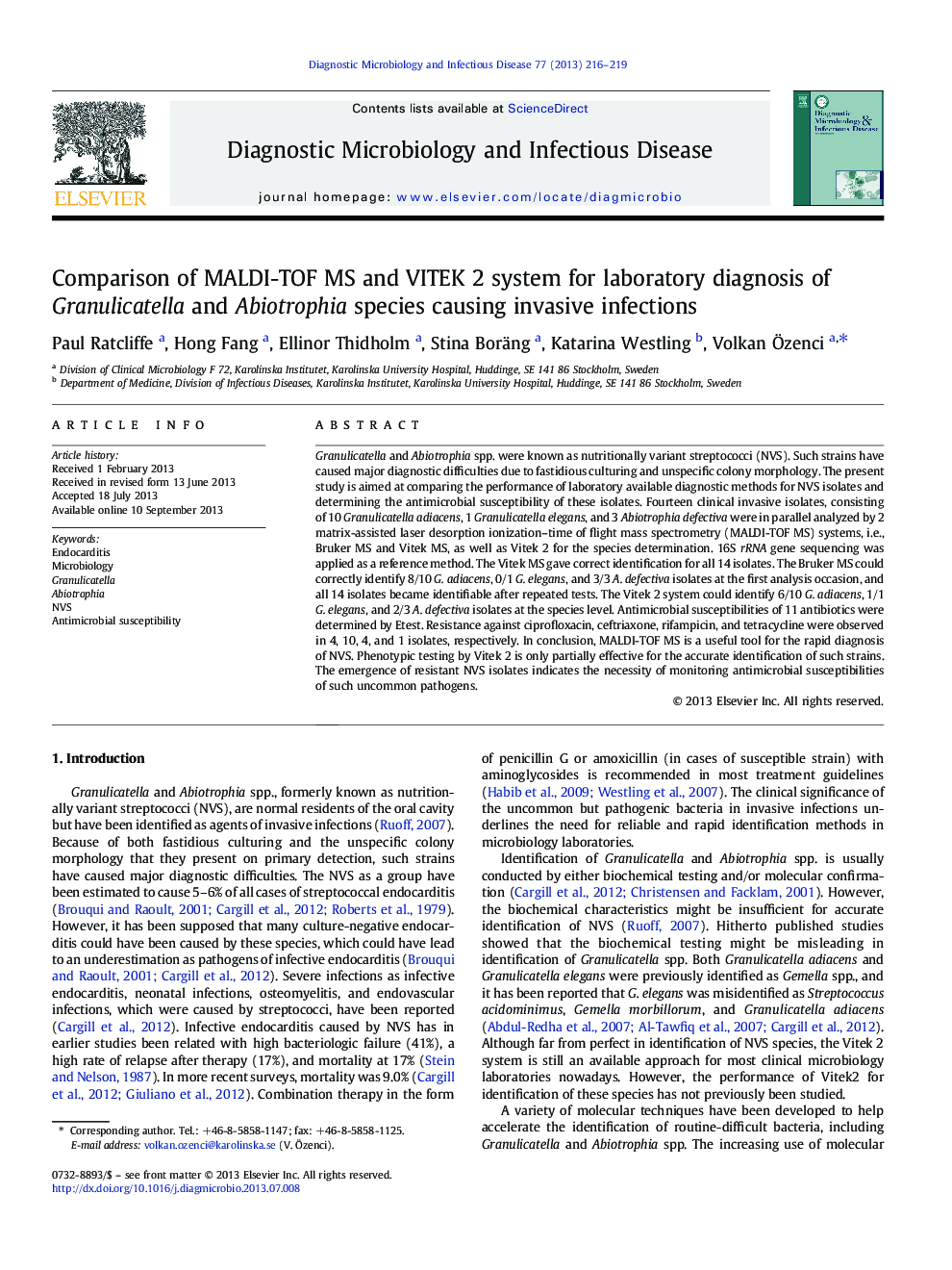| Article ID | Journal | Published Year | Pages | File Type |
|---|---|---|---|---|
| 6115927 | Diagnostic Microbiology and Infectious Disease | 2013 | 4 Pages |
Abstract
Granulicatella and Abiotrophia spp. were known as nutritionally variant streptococci (NVS). Such strains have caused major diagnostic difficulties due to fastidious culturing and unspecific colony morphology. The present study is aimed at comparing the performance of laboratory available diagnostic methods for NVS isolates and determining the antimicrobial susceptibility of these isolates. Fourteen clinical invasive isolates, consisting of 10 Granulicatella adiacens, 1 Granulicatella elegans, and 3 Abiotrophia defectiva were in parallel analyzed by 2 matrix-assisted laser desorption ionization-time of flight mass spectrometry (MALDI-TOF MS) systems, i.e., Bruker MS and Vitek MS, as well as Vitek 2 for the species determination. 16S rRNA gene sequencing was applied as a reference method. The Vitek MS gave correct identification for all 14 isolates. The Bruker MS could correctly identify 8/10 G. adiacens, 0/1 G. elegans, and 3/3 A. defectiva isolates at the first analysis occasion, and all 14 isolates became identifiable after repeated tests. The Vitek 2 system could identify 6/10 G. adiacens, 1/1 G. elegans, and 2/3 A. defectiva isolates at the species level. Antimicrobial susceptibilities of 11 antibiotics were determined by Etest. Resistance against ciprofloxacin, ceftriaxone, rifampicin, and tetracycline were observed in 4, 10, 4, and 1 isolates, respectively. In conclusion, MALDI-TOF MS is a useful tool for the rapid diagnosis of NVS. Phenotypic testing by Vitek 2 is only partially effective for the accurate identification of such strains. The emergence of resistant NVS isolates indicates the necessity of monitoring antimicrobial susceptibilities of such uncommon pathogens.
Related Topics
Life Sciences
Immunology and Microbiology
Applied Microbiology and Biotechnology
Authors
Paul Ratcliffe, Hong Fang, Ellinor Thidholm, Stina Boräng, Katarina Westling, Volkan Ãzenci,
